
by Fabio Giuseppe Carlo Carisio for VT Europe
Versione originale in Italiano
«Foster a culture of cyber resilience: The deployment of military forces is particularly vulnerable to a potential adversary seeking to delay and destabilize NATO or EU responses to a crisis. Increased awareness of the cyber threat posed to military mobility should be actively promoted through better communication between NATO, the EU, the member nations, and all civilian and military stakeholders during the planning phase of operations. Far closer civil-military relationships must also be forged to ease incompatibilities between military and civilian equipment that cyberattacks would seek to exploit».
«Counter information warfare: Information warfare during a crisis, in combination with cyberattacks and subversive actions, could have significant destabilizing and paralyzing effects on Western societies as well as on allied forces. Therefore, fostering state and societal resilience against all forms of hybrid warfare, including malicious cyber activities and disinformation, is NATO’s first line of deterrence and defense and a precondition for the EU’s ability to act successfully. Host nations’ civil and military authorities, together with commanders of transiting and deployed forces, should closely coordinate to develop a common approach to countering disinformation if they are to respond swiftly and effectively».
Under the heading “resilience” these sentences are found in one of the crucial passages of the report drawn up by a think tank of retired NATO generals on a plan for a more effective militarization of Europe. The project, drawn up in an Atlantist and extremely Russophobic key with 5 potential war scenarios, seems to be written by Doctor Strangelove, or the character created from the 1958 political fiction novel by Peter George that the director Stanley Kubric adapted in the homonymous film about the atomic nightmare with a legendary Peter Sellers in triple role.
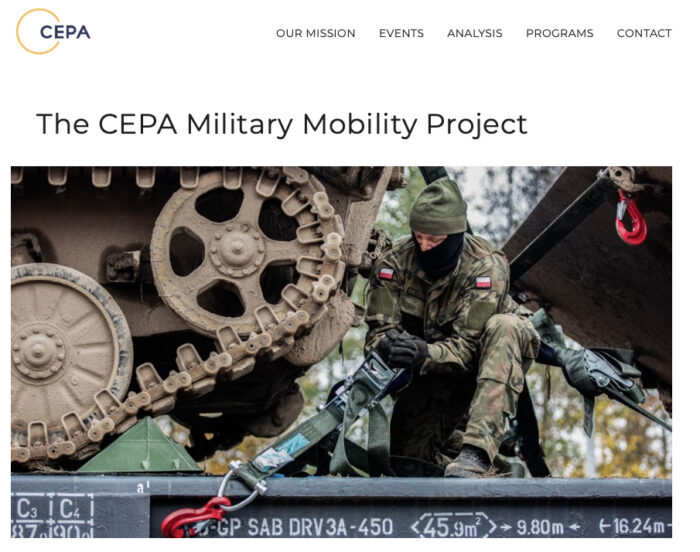
Unfortunately, for those like us who love true Universal Peace more than the shady plots of the Atlantic Pact and are aware that in this period the Kremlin certainly has no intention of attacking those who do not attack it, this military mobility project appears disturbing because it has been launched by the Center for European Policy Analysis (CEPA), based in Washington, thanks to the collaboration with authoritative NATO commands (such as the Allied Joint Force Command of Brunssum and Naples), and strategic offices of the European Union. But, above all, it is sponsored by the usual Weapons Lobby that conditions and is part of the Deep State projected towards the New World Order from the Covid-19 pandemic.
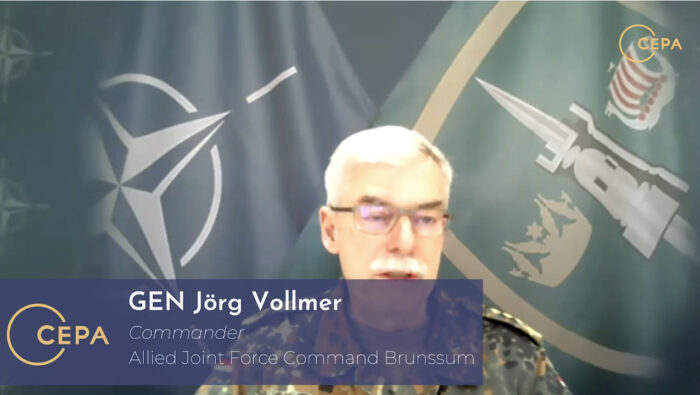
As we have shown in numerous investigations, behind the warlords and the Big Pharma of vaccines, an international financial potentate, mostly Zionist, is speculating, around which political Freemasonry such as Western military intelligence has coagulated, very close to that of Israel and the Muslim Brotherhood of Turkey (second NATO army) and Qatar (where the most important joint air base of the Atlantic Pact of the Persian Gulf is located).
This is why every sentence contained in this plan becomes cryptic and can lead to interpreting as offensive projects those that are actually presented as defensive against the Russian threat and that of counter-information.
Such assimilation, if it were increasingly legitimate, would lead to accuse any journalist or media of complicity with Moscow and then subject them to any preventive political-military censorship. Not only is social freedom at stake, already largely compromised with the Green Pass and other anti-Covid restrictions in the European Union and United States, but above all that of opinion.
Equally disconcerting is to think that the CEPA plan against Russia was developed in 2020 by military apparatuses that were instead totally unable to verify the alleged laboratory origin of the SARS-Cov-2 virus, despite the public complaints of distinguished virologists and experts of intelligence, as if the cover plan is part of a much more complex strategy of the New World Order in which war and health dictatorship go hand in hand.
THE CRISIS BETWEEN NATO AND RUSSIA WORSENS
What happened in the last few days in Brussels brings the project of Military Movement in Europe elaborated by the Washington study center very topical.
Nine diplomats from the Russian embassy at NATO headquarters were in fact withdrawn accreditation because they were accused of being spies. In response, the Kremlin has decided to close its offices from November 1, 2021, deeming the obvious provocation unacceptable. If anyone at NATO wants to speak to Moscow, Lavrov pointed out, the embassy in Belgium is available.
In the meantime, however, the diplomatic clash has moved on to concrete facts. Top defense chiefs from NATO member states have given a green light to a new grand strategy on how to beat Russia in any potential all-out conflict, as Moscow says the move proves the US-led bloc isn’t open to improving relations.
«On Thursday, ministers met in Brussels to sign off the scheme, named the “Concept for Deterrence and Defense in the Euro-Atlantic Area.” According to NATO’s General Secretary, Jens Stoltenberg, it is part of efforts to “continue to strengthen our alliance with better and modernized plans.”» Russia Today reported on October 22, 2021 in reference to the previous day’s agreement.
The bloc’s officials insist they don’t believe an attack is imminent, but that it is worthwhile being prepared in any case.As part of the plan, NATO troops would fight against Russia’s forces in both the Baltic Region and across the Black Sea. The battle plans also focus on non-conventional warfare, including the use of nuclear weapons, cyber-attacks and even conflict in space.
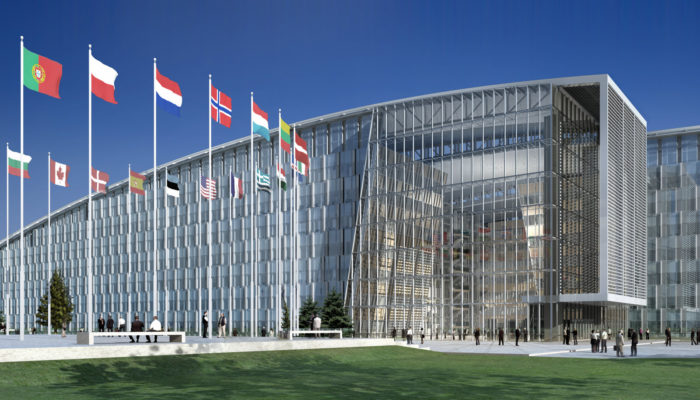
However, Kremlin Press Secretary Dmitry Peskov hit out at the adoption of the strategy on Friday, saying that it shows there is no prospect for turning around rock-bottom relations with the bloc. “There is no need for dialogue under these conditions,” he argued, saying that the adoption “of such a concept by NATO confirms it once again.” According to him, “this alliance was not created for peace, it was conceived, designed and created for confrontation.”
Earlier this week, two fighter jets were scrambled to escort a pair of American US B-1B strategic bombers over the Black Sea, just days after Russian sailors intercepted the USS Chafee as it set course for the waters of Peter the Great Bay, which Russia maintains is its sovereign territory.
Foreign Ministry Spokeswoman Maria Zakharova hit out at Stoltenberg’s comments on Thursday, saying that the NATO boss underestimates the scale of the problem in relations, and that ties between the two are actually even “in a state worse than at any point during the darkest days of the Cold War.”
«Speaking to dignitaries in a speech at the Valdai Discussion Club on Thursday, Russian President Vladimir Putin accused the US of “opening the door” to Ukraine joining NATO with a recent trip by Defense Secretary Lloyd Austin to Kiev. However, even without the Eastern European nation joining the bloc, he said, “the military development of the territory is already underway and this really poses a threat to the Russian Federation.» RT further reported.
“Tomorrow, rockets could appear near Kharkov, what are we going to do about it? It’s not us placing our missiles there, it’s them shoving theirs under our nose,” Putin added.
CEPA & NATO-EU PLAN SPONSORED BY WEAPONS INDUSTRIES
What is happening today is absolutely specular to what was budgeted in the CEPA project by the so-called NATO-EU Deep State thanks to the contributions of some of the most important international armaments corporations such as the American Raytheon (of which General Austin Lloyd was a consultant before becoming head of the Pentagon in the administration of Joseph Biden) and the German Reihmetall, cause of scandal for the bombs built in Italy and used by Arab countries (UAE and Saudi Arabia) in Yemen despite the embargo, precisely because of a Raytheon subcontract (later suspended by Biden).
«The project focused on five different political-military scenarios each of which was examined by a multinational working group in a series of military mobility workshops that took place between September and October 2020. Their purpose was to generate a number of substantial recommendations that, if implemented, would advance military mobility across Europe» reads the summary of the report of the Center for European Policy Analysis.
«In an address to the Plenary Military Mobility Workshop in October 2020, Adm. Rob Bauer, the Netherlands’ chief of defense, identified the key challenges posed to his country as a transit nation for moving military forces: the need for improved infrastructure; clear and agreed rules and regulations (for dangerous goods, customs, cross-border movement permissions); military mobility relevant command and control (C2); the establishment of a 24/7 network of national points of contact across NATO and the European Union (EU), respectively; the establishment of Territorial Command authorities by transit and host nations to facilitate smooth movements along multimodal movement corridors, properly supported by logistic hubs; and the fostering of digital support and protection. This report seeks to address these and related challenges that military mobility faces in Europe in general».
The project timetable was severely impacted by the Covid-19 pandemic. It was originally envisaged that the bulk of the work would have taken place at a major Brussels conference in spring 2020. However, the Covid-19 lockdown forced the postponement of the conference. In the end, it was decided to generate the work through several virtual working group sessions which took place between the end of August and October 2020, with a culminating virtual plenary conference on October 20.
Italy Halts Bombs for UAE-KSA used in Yemen. Years after Protests against BlackRock’s Fundings
Over the course of the spring and summer, CEPA hosted a number of virtual panels each month in order to create awareness, build momentum toward the virtual Military Mobility Workshop, and further inform the effort. For the sake of brevity, we cite only the first and last as examples.
April 2, 2020: “Moving Mountains Amid a Crisis? Increasing Military Mobility Across Europe,” moderated by retired Lt. Gen. Ben Hodges, Pershing Chair in Strategic Studies, CEPA; speakers: retired Lt. Gen. Heinrich Brauss, former assistant secretary general for defense planning and policy at NATO; retired Brig. Gen. Hans Damen, strategic adviser for Insparcom; Tania Latici, policy analyst at the European Parliamentary Research Services; and Professor Dr. Julian Lindley-French, senior fellow at the Institute for Statecraft.
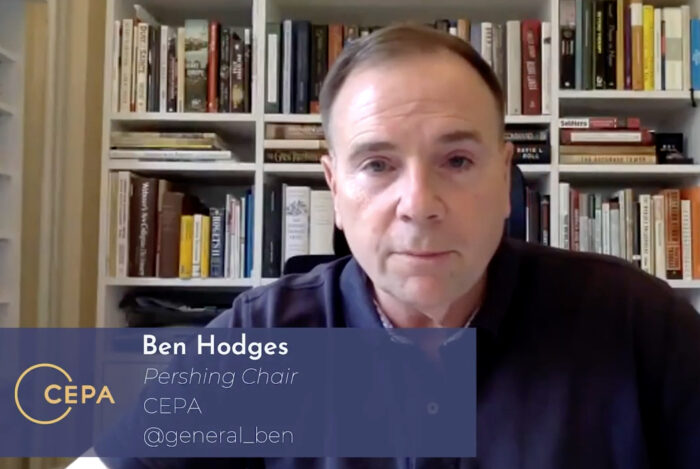
July 7, 2020: “How We Move: Five Scenarios That Test Military Mobility Across Europe,” moderated by retired Lt. Gen. Ben Hodges, Pershing Chair in Strategic Studies, CEPA ; speakers: Dr. Jacek Bartosiak, CEO and founder, Strategy&Future; Dr. Oliver Gnad, managing director, Bureau für Zeitgeschehen; Miriam Ludwig, program manager, Bureau für Zeitgeschehen; and Charles “Bill” Robinson, chief of Integrated Learning, Joint Wargaming and Experimentation Division, Joint Staff, J7.
THE CRISIS BETWEEN NATO AND RUSSIA STARTED IN UKRAINE AND CRIMEA
«Europe’s security environment changed fundamentally in 2014 as a consequence of Russia’s aggression against Ukraine and its illegal annexation of Crimea. Since then, NATO has placed renewed emphasis on deterrence and defense and made a significant effort to strengthen its posture. In view of Russia’s now-entrenched policy of constant confrontation, its use of hybrid warfare in both peacetime and during crises, as well as its growing military potential close to NATO’s borders, the Alliance must consider the simultaneous and parallel defense of several regions all of which could be at risk in a crisis with Russia. These regions stretch from Northern Norway and the North Atlantic through the Baltic Sea and Black Sea Regions to the Mediterranean».
This can still be read in the premises of the “Project’s Primary Message” in which obviously all the details on the bloody coup financed by the embassies in Ukraine of some NATO countries are omitted, culminating in the massacre of Maidan Square in Kiev in which 100 human beings among demonstrators died and policemen, killed by mercenary sniper rifle shots identified by the newspapers but never by an international investigation.
MALAYSIAN FLY MASSACRE: UKRAINE FALSE-FLAG WITH NATO, 007 AND SOROS ONG
Among the promoters of the Orange Revolution, already attempted in 2004 thanks to the funding of the globalist speculator George Soros by his own admission, there was a Muslim reporter of Afghan origin who became deputy director of the Ukrainian national war industry, confirming how much rewards arousing protests in the streets when covered by the Deep State.
On Ukraine we could write other thousands of pages also in reference to the terrible execution, with mortar grenades, of the Italian reporter Andrea Rocchelli, who was hit by brigades of the Ukrainian National Guard in Donbass, which resulted in a trial subject to heavy international political conditioning.
This is why the annexation of Crimea to Russia, acclaimed by a plebiscite in the peninsula (donated at the time by Moscow to Kiev) and cemented with the longest bridge in Europe that connects it to the Russian region of Krasnodar, seems to be nothing more than the legitimate and balanced geopolitical response against a coup run by the Barack Obama administration and in particular by the then vice president Joseph Biden, whose son Hunt, as a consultant to the Burisma company, speculated on the mirage of gas and oil in the Donbass (where they still fight).
These clarifications are essential to understand how the Atlantic narrative is absolutely biased and, in the event of an increase and adoption of the directives of the CEPA theoretical plan, it could expose us to accusations of disinformation with the consequent risk of military intervention only because we enter into the details of facts that no investigation UN international law or the International Criminal Court in The Hague has never investigated.
UKRAINEGATE: an investigative “memo” accuses Joe Biden and John Kerry too. Reopened the inquiry
The same can be said for the Mediterranean Sea in reference to Syria or Libya. But we will go into detail after analyzing the priorities of the plan and the “scenarios” of potential war. Before viewing the five war scenarios analyzed by the CEPA document, we mention some of those who collaborated in it in order to highlight how reliable its design and future implementation is.
The multinational Military Mobility Project Team combined experience and knowledge and was structured with two Project Co-Leaders: Ben Hodges, Pershing Chair in Strategic Studies, Center for European Policy Analysis (United States), Lauren Speranza, Director, Transatlantic Defense and Security Program, Center for European Policy Analysis (United States).
The advisers are: Julian Lindley-French (United Kingdom) (lead report author) Heinrich Brauss (Germany) (lead report author) Oliver Gnad (scenario design) (Germany) Miriam Ludwig (scenario design) (Germany)
The Project Staff consists of: Christina Brown (United States) Candace Huntington (United States) Gabrielle Moran (United States) Carsten Schmiedl (Germany/Canada) Miruna Sirbu (Romania).
The Industry Partners are: General Dynamics European Land Systems Acrow Corporation of America DB Cargo Oshkosh Defense Raytheon Missiles & Rheinmetall Defence.
Among the many participants and organizers who accredit the seriousness of the CEPA plan are for example: Army of the Czech Republic – J4 Logistics, Atlantic Council, Boeing Defense, Space & Security,, European Commission – Directorate-General for Mobility and Transport (DG MOVE), European Defense Agency (EDA), European External Action Service (EEAS) – European Union Military Staff; Security and Defense Policy Division, European Parliament – European Parliamentary Research Service, George C. Marshall European Center for Security Studies, German Federal Armed Forces – Mountain Engineer Battalion; Joint Support and Enabling Service Headquarters (JSES), Ministry of Defense of Latvia – Crisis Management Department, Ministry of Defense of the Netherlands – Task Force Logistics, NATO Allied Joint Force Command Naples (JFC Naples), NATO Force Integration Unit (NFIU) Lithuania, NATO Force Integration Unit (NFIU) Poland, NATO Supreme Headquarters Allied Powers Europe (SHAPE) – Strategic Enablement Directorate (STREN), NATO Joint Force Command Brunssum (JFC Brunssum), Movement and Transportation (M&T), Infrastructure & Engineering (IE), RAND Corporation, Swedish Defense Research Agency, United States Army Europe – 21st Theater Sustainment Command, G4 Mobility Division, United States European Command.
THE FIVE SCENARIOS OF WARFARE BETWEEN NATO AND RUSSIA
«Each scenario was assigned to a working group composed of multinational, cross-functional, civilian, and military integrated teams of some 20 personnel. They all enjoyed representation from the EU, NATO, member nations, industry, media, and academia, and included specific subject matter experts in areas such as cyber, transportation, and logistics».
These are the leading leaders of each Working Group: Scenario I: John Agoglia (United States), Scenario II: Jacek Bartosiak (Poland), Scenario III: Phillip A. Petersen (United States), Scenario IV: Greg Melcher (United States), Scenario V: Hans Damen (Netherlands).
«It is against the backdrop of a challenging contemporary strategic context that the Military Mobility Project was established. The essential dilemma faced by NATO is this: While the Alliance’s 30 member nations provide far more aggregated military power compared to Russia they are disaggregated through geography, command, and structure, as well as varying levels and types of strategic culture. Russia, on the other hand, can choose where, when, and if to apply locally overwhelming force anywhere on the perimeter of both the EU and NATO. Given that potentially critical allied disadvantage, effective and efficient military mobility is a critical element of credible deterrence and defense, as well as regional emergency management, as evinced by the response to the Covid-19 pandemic. While NATO has made significant progress in adapting to a changing strategic environment, and the EU has devoted a significant effort to improving military mobility by means of implementing the Action Plan for Military Mobility, far more needs to be done given the evolving nature of the threat».
The words seem to have been drawn from a book on the Cold War when the Soviet Union threatened the US with missiles in Cuba despite the fact that in these days, we will talk about it in another article, the Kremlin has decided to increase the supply of gas essential to the Union European.
«The project’s core assumption was that effective and efficient military mobility across road, rail, sea, and air would far better support and enable a range of contingencies from a peer competitor crisis in Europe to the consequences of political, economic, and social collapse in the Middle East and North Africa and the threat posed by terrorism».
« With this in mind, the project established five scenarios. Three of the scenarios addressed high-end military dilemmas in varying forms in response to a possible threat from Russia, all of which would require the use of significant force, while the other two scenarios considered the use and utility of military force across a much broader spectrum of civil-military interventions. The aim of the scenarios was to test military mobility across differing conditions, environments, and challenges within the overall political and strategic context established herein» reads on the CEPA document.
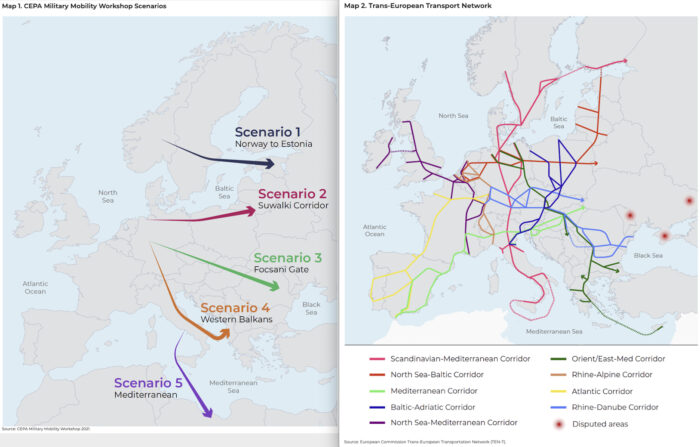
The critical points identified «also likely be subject to complex strategic coercion prior to full-scale military conflict across the hybrid cyberwar spectrum of disinformation, deception, destabilization, disruption, and implied or actual destruction», highlights the analysis still aiming to discredit the alleged counter-information.
« Scenarios I (the Nordic-Baltic Route), II (the Suwałki Corridor), and III (the Focşani Gate) tested the movement of forces for reinforcement of eastern allies located on NATO’s northeastern and southeastern flanks. They were based on the political-military framework set by NATO’s political leaders at various summits, such as the 2016 Warsaw Summit where the heads of state and government agreed to establish two forms of multinational forward presence: an Enhanced Forward Presence (eFP) and a Tailored Forward Presence (tFP). The eFP was established to reinforce the Baltic states and Poland, all of which share common borders with Russia and could be exposed to a potential direct military attack by Russia. The eFP comprises several multinational battlegroups ready to “fight tonight.”».
«The tFP in Romania and Bulgaria committed allied forces to reinforce the defense of NATO members not directly exposed to a potential military attack by Russian forces. The tFP saw the creation of a Multinational Divisional HQ (South-East), as well as a Multinational Brigade HQ (South-East), plus roughly two battalions. It also acts as a framework for the regular exercising of multinational allied forces in the region and includes an enhanced NATO air and naval presence in the Black Sea Region».
«The difference between the two forms of “presence” is essentially one of time. In the event of an attack on NATO’s southeast, Russia would either need to launch a large-scale amphibious landing operation from Crimea or first defeat Ukrainian forces before crossing Moldova to invade Romania, all of which would imply significant preparations, large forces, and significant time. Consequently, NATO would likely have time to prepare its collective defense of the region, albeit subject to the constraints on military mobility environment being sufficiently permissive for NATO to reinforce national defenses in the region that is notorious for poor communications and transportation links. However, while the Alliance force posture in both the eFP and tFP reflects headquarters and forces at different states of readiness, for the sake of methodological rigor each scenario tested assumptions to the credible worst-case for each of them».
«Scenarios IV (Western Balkans) and V (Libya) specifically tested the planning assumptions of the EU with regard to a possible crisis response beyond their respective borders. However, while Scenario IV dealt with reinforcing the EUFOR mission in Bosnia and Herzegovina (Operation Althea) to fend off possible Serbian and Russian destabilization activities and restore stability across the Western Balkans, Scenario V envisaged an autonomous EU peacekeeping mission without recourse to NATO assets and capabilities. The assumption therein being that there would be no Berlin-Plus missions beyond the existing one in Bosnia-Herzegovina. Consequently, the scenario considered how best to deploy a relatively small force package across a large geographical area using unhardened existing arteries».
«Scenario I examined the movement of a defined NATO force package from Norway through Sweden and across the Baltic Sea to the Baltic states and Poland. Its focus was the political, legal, organizational, and infrastructural challenges that would be faced moving a battlegroup from Oslo to Stockholm and on to Estonia. Scenario II examined the movement of military forces from Germany through Poland to the Baltic states».
«Defending the Baltic states and Poland has moved the AOR far to the east of where it was at the end of the Cold War. And yet, only two roads and one railway line through the Suwałki Corridor would enable NATO land forces to reinforce the region across land. Scenario III tested reinforcing NATO’s southeastern region, in particular the movement of forces across the Carpathian Mountains and the utility of the River Danube for military transport to the so-called Focşani Gate — a terrain basin that is suitable for maneuver operations and also offers a military force that would be able to penetrate the gate from the east to gain an avenue toward the Western Balkans. The essential challenge was to get allied forces into the region in strength and in time. The infrastructure that would enable such movement is by and large old with some of the POD under Russian influence».
«Scenario IV concerned an EU-led operation, supported by NATO assets and capabilities that had to be moved across Europe to the Western Balkans to restore stability and counter Russian influence therein. The focus was on the movement and use of military forces in a complex strategic environment in which hybrid warfare and military competition were destabilizing an already unstable the region. Finally, Scenario V tested the manifold technical, logistical, and military challenges of moving a force across Europe and the Mediterranean Sea into a region beyond Europe’s borders which has long since been subject to instability, conflict, and civil war. For the purpose of the scenario, the international community decided on an U.N.-sanctioned ground operation with an EU force at its core charged with keeping armed militias apart».
MILITARY MOBILITY: STRATEGIES AND FUNDING
In the long premises of the document that emerged after the military workshops (full link at the bottom of the article), reference is made to some key points.
«Streamline Cross-Border Movement Permissions. Smooth military movement requires harmonized procedures for requesting and issuing border-crossing and transit permission for all modes of transport. NATO has implemented a legal framework through Technical Arrangements (TAs) with both allies and those European partners that participate in the Partnership for Peace (PfP) program. These TAs are geared to NATO’s current advance planning. The EDA has also been working on two TAs within the framework of its program on “Optimizing Cross-Border Movement Permission Procedures in Europe” for military forces (military personnel, equipment, ammunition, fuel), one for the surface and another for the air domain. Twenty-five EU member states have joined the program, which is reportedly progressing well. The aim is to lift existing restrictions in national legislation. The TAs will thus facilitate the cross-border movement of EU member states’ forces and capabilities for operations, exercises, and daily activities and are expected to be completed and agreed by spring 2021. Therefore, it is essential that all EU member states commit to establishing a harmonized movement approval process within Europe. Norway has joined the program; it is important that other non-EU European allies join up as well or at least establish compatible rules».
This means expropriating every sovereign state of the right to evaluate any military movements which, in fact, could endanger its own democracy and safety. Among other priorities there is «Standardize regulations for the transport of dangerous goods» and «Accelerate response times for CBMP».
«The EU has committed itself to ensure the timely delivery of cross-border movement permissions by its member states, including for requests for entry and movement permission for military forces and equipment for all modes (surface, air, and sea) for routine activities within no more than five working days; and to consider further reducing this period for rapid reaction units/rapid reinforcement» is another crucial objective together with those connected to the evaluation of transport infrastructures, also with the construction of new artifacts suitable for military equipment that is then heavier: «given that the combination of truck, trailer, and heavy tank could go well beyond 120 tons».
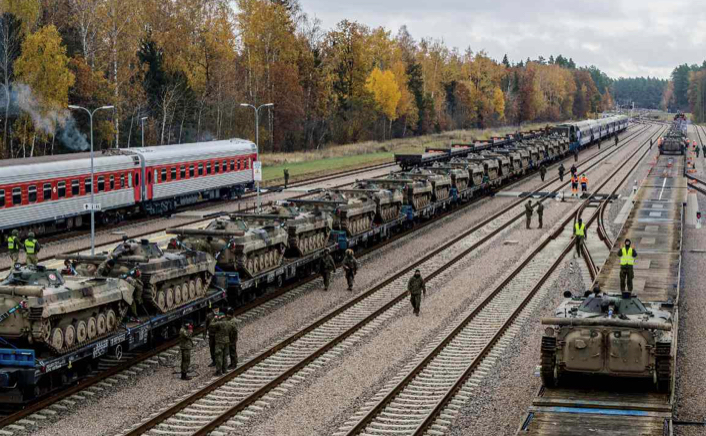
To implement this, according to the CEPA plan, it is essential «Make best use of the European Commission’s Trans-European Transport Network policy. The European Commission has, meanwhile, established procedures to identify dual-use (civilian and military) infrastructure projects as part of its TEN-T network that would be eligible for co-funding. EU member states have also been invited to identify their priority dual-use projects, and the European Commission plans to launch a call for proposals in the first semester of 2021».
WEAPONS LOBBY – 3: THE ZIONIST KING OF DRONES AND MERCHANT OF DEATH
There are also many strategies highlighted to improve the command points such as « Make full use of NATO’s Joint Support and Enabling Command. It is assumed herein that the SACEUR has approved a clear delineation of Areas of Responsibility (AORs) between his subordinate joint commands, in particular the two Joint Force Commands (JFC Brunssum and Naples), the Joint Support and Enabling Command (JSEC), and the Standing Joint Logistic Support Group (SJLSG). Such a delineation of responsibilities and assignment of related areas is an essential prerequisite for ensuring smooth and swift movement of forces through Europe to final destination (FD)».
The CEPA project thus appears to be a concrete plan of preparation for an offensive action rather than a defensive strategy. To develop it, financing hypotheses are already foreseen.
«Increase EU funds for military mobility. In the course of internal negotiations for the MFF, the funding originally envisioned for the military mobility envelope of the CEF 2021-2027 was reduced from €6.5 billion to €1.69 billion (in current prices). Therefore, allies that are also members of the EU should fully tap the CEF to co-fund infrastructure projects that are critical for military mobility».
«Extend common funding. NATO allies should consider common funding to improve infrastructure and prepositioning of mobility assets along movement corridors/MSRs that are crucial to enabling the rapid movement and sustainment of allied forces to and in theater. The Alliance should also explore using the NATO Security Investment Program (NSIP) to co-finance relevant projects that are not co-funded by the European Commission, in conjunction with the relevant allies, because such infrastructure projects would benefit NATO as a whole. NATO should also consider counting investments made by allies to improve infrastructure that is clearly dedicated to facilitating military mobility of NATO forces as part of a nation’s 2% (of GDP) benchmark for defense spending».
For an Italian citizen residing in the European Union who continues to dream of peace in the world, it is certainly not pleasant to discover that their taxes could be used, albeit minimally, to finance the implementation of a CEPA plan supported by the Weapons Lobby in an apparently defensive perspective against Moscow… Above all because the Russia of the new Tsar Vladimir Putin is becoming the great bulwark of Christianity against the rampant excessive power of atheism, deism and deviant Catholicism sown by Freemasonry.
Fabio Giuseppe Carlo Carisio
© COPYRIGHT GOSPA NEWS
no reproduction without authorization
MAIN SOURCES
GOSPA NEWS – WUHAN.GATES REPORTS
GOSPA NEWS – WEAPONS’ LOBBY INVESTIGATIONS
RUSSIA TODAY – NATO UNVEILS NUCLEAR PLAN WAR
CEPA PROJECT

Fabio is Director and Editor of Gospa News; a Christian Information Journal.
Fabio Giuseppe Carlo Carisio, born on 24/2/1967 in Borgosesia, started working as a reporter when he was only 19 years old in the alpine area of Valsesia, Piedmont, his birth region in Italy. After studying literature and history at the Catholic University of the Sacred Heart in Milan, he became director of the local newspaper Notizia Oggi Vercelli and specialized in judicial reporting.
For about 15 years he is a correspondent from Northern Italy for the Italian newspapers Libero and Il Giornale, also writing important revelations on the Ustica massacre, a report on Freemasonry and organized crime.
With independent investigations, he collaborates with Carabinieri and Guardia di Finanza in important investigations that conclude with the arrest of Camorra entrepreneurs or corrupt politicians.
In July 2018 he found the counter-information web media Gospa News focused on geopolitics, terrorism, Middle East, and military intelligence.
His articles were published on many international media and website as SouthFront, Reseau International, Sputnik Italia, United Nation Association Westminster, Global Research, Kolozeg and more…
His investigations was quoted also by The Gateway Pundit, Tasnim and others
He worked for many years for the magazine Art & Wine as an art critic and curator.
ATTENTION READERS
We See The World From All Sides and Want YOU To Be Fully InformedIn fact, intentional disinformation is a disgraceful scourge in media today. So to assuage any possible errant incorrect information posted herein, we strongly encourage you to seek corroboration from other non-VT sources before forming an educated opinion.
About VT - Policies & Disclosures - Comment Policy




Her real husband “neoliberalcon” Robert Kagan, snooty know it all creep who co-authored “project for the new century” which gave us Iraq, Syrian, Libyan, Afghanistan wars of genocidal US and NATO destruction, only lacking nuclear carpet bombing to make himself in same class as Peter Sellers insane characters.
Fortunate or unfortunate Victoria a
…and Robert have no children’s futures to worry about and protect from retaliatory nuclear missle exchanges and fascist takeovers they promote and give excuse to.and only have to worry about their careers as front line B-52 bomber pilots dropping their elite propaganda sewage onto the world’s disbelief how insane ii all can be.
NATO has to do something to give purpose to their existense, and their purpose now exposed is to nuke Russia.
Balkan states Poland and all of Europe immediately flattened by Russian missles in response really doesnt matter in the least as these guys are as nuts as Dr Strangelove and his even more insane wife, Victoria Nuland.
Interesting marriage… 😉
Comments are closed.